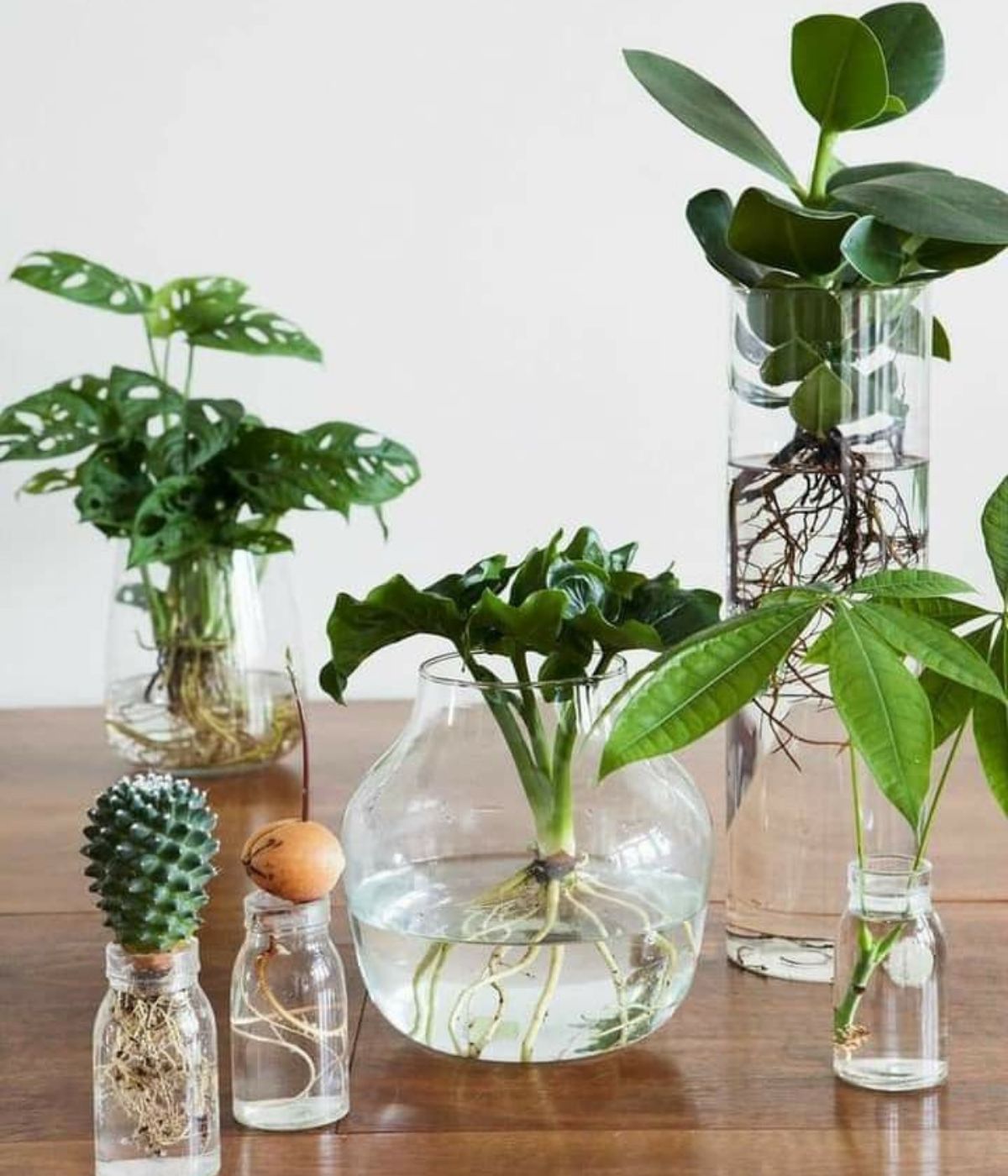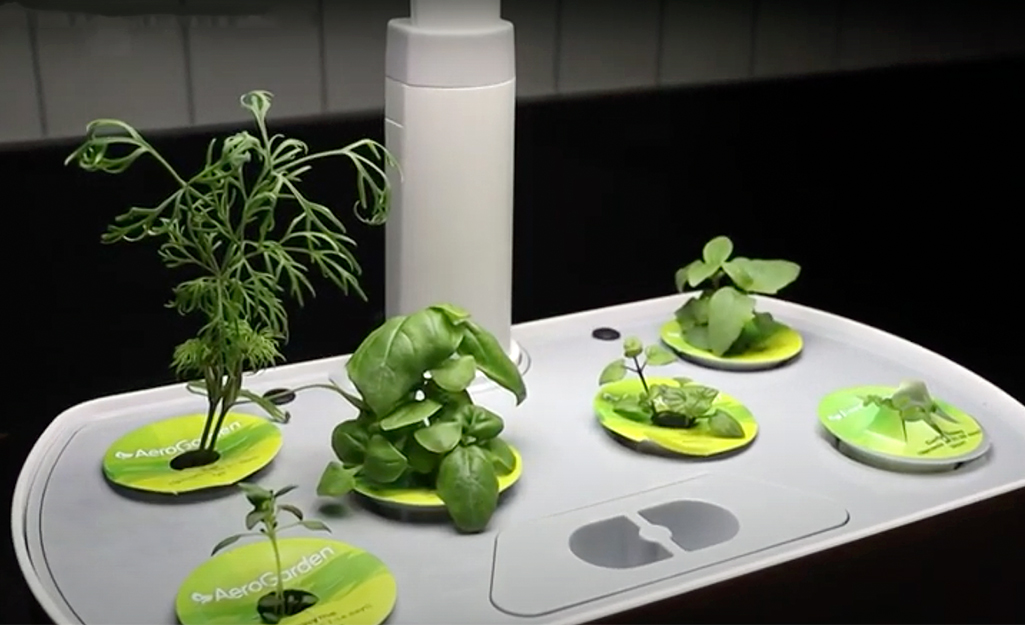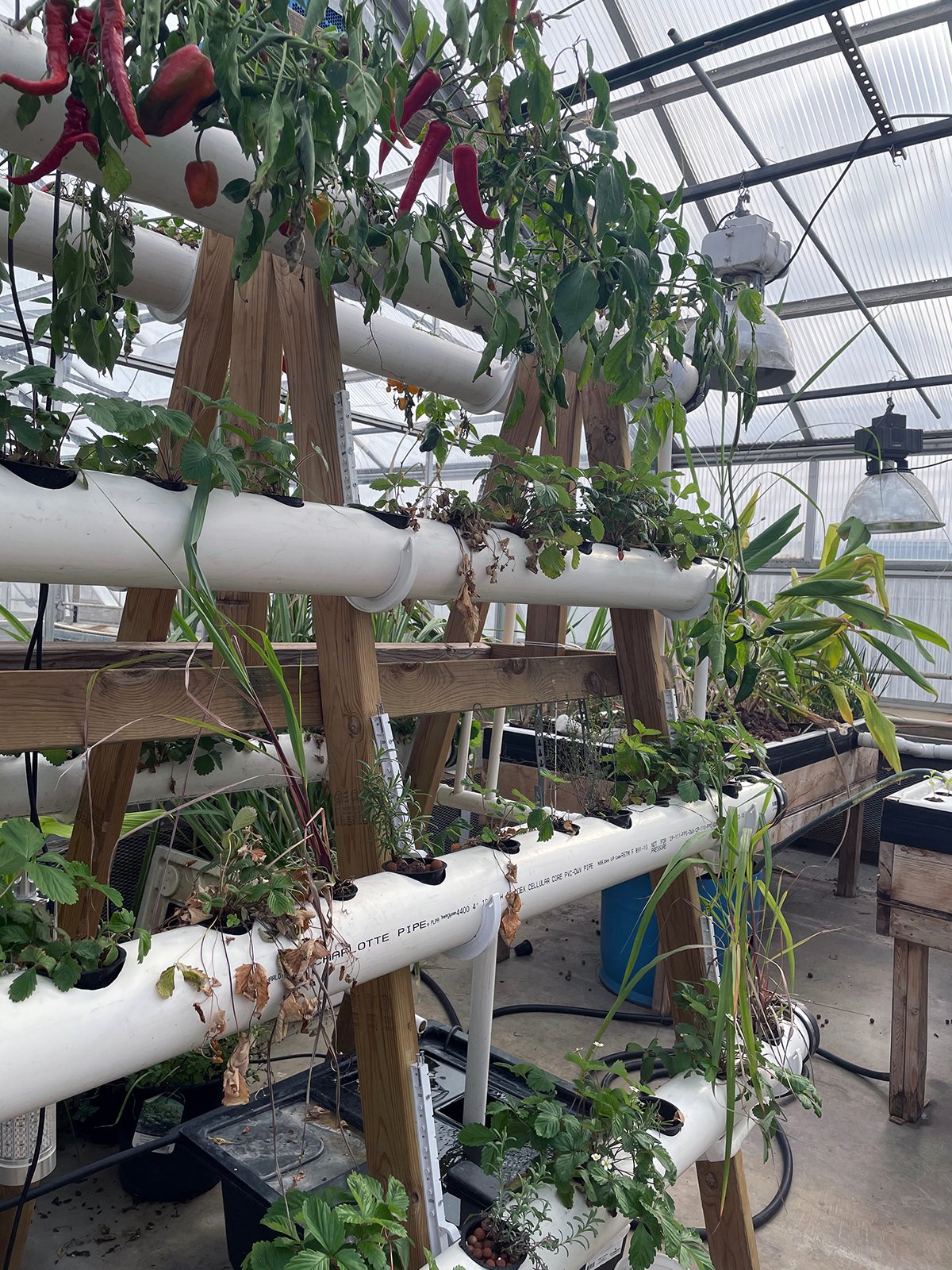Yes, hydroponic plants can grow indoors. They thrive without soil, using nutrient-rich water instead.
This method is ideal for indoor gardening. Hydroponics offers a unique way to grow plants inside your home. It uses a water-based solution, eliminating the need for soil. This can be perfect for urban dwellers or those with limited garden space.
You can grow a variety of plants, from herbs to vegetables, all year round. Indoor hydroponic systems are also cleaner and easier to maintain. By controlling the environment, you ensure plants get the right nutrients and light. This can lead to faster growth and higher yields. Whether you’re a seasoned gardener or a beginner, indoor hydroponics is worth exploring.

Credit: thursd.com
Introduction To Hydroponics
Hydroponics is a method of growing plants without soil. This technique uses water-based solutions to deliver nutrients directly to the plant roots. Indoor hydroponic systems are becoming popular due to their efficiency and space-saving benefits.
What Is Hydroponics?
Hydroponics involves growing plants in a controlled environment using water, nutrients, and light. The roots of the plants are submerged in a nutrient-rich solution. This method allows plants to grow faster and healthier compared to traditional soil-based farming.
There are several types of hydroponic systems:
- Deep Water Culture (DWC)
- Nutrient Film Technique (NFT)
- Ebb and Flow (Flood and Drain)
- Wick System
- Aeroponics
Each system has its own advantages and is suitable for different types of plants.
History Of Hydroponic Farming
The concept of hydroponics dates back to ancient times. The Hanging Gardens of Babylon and the floating gardens of the Aztecs are early examples of soilless growing techniques.
In the 1930s, Dr. William Frederick Gericke of the University of California coined the term “hydroponics”. He successfully grew tomatoes using water and nutrient solutions.
Since then, hydroponic farming has evolved significantly. Modern hydroponic systems are used in commercial agriculture and home gardening. These systems are efficient and sustainable, making them ideal for urban environments and areas with limited arable land.
Today, hydroponics is a popular method for growing a variety of plants indoors. It offers a reliable way to produce fresh vegetables, herbs, and even fruits year-round.
Benefits Of Indoor Hydroponic Gardening
Indoor hydroponic gardening is a great method for growing plants without soil. This method offers many advantages for urban and small-space gardeners. Let’s explore the key benefits of indoor hydroponic gardening.
Space Efficiency
Maximize your space with indoor hydroponic gardening. Traditional gardening methods require much room for soil and spacing between plants. Hydroponic systems use vertical space efficiently. You can stack multiple levels of plants. This allows you to grow more in less space.
Hydroponic systems can be set up in apartments, balconies, or small rooms. The compact design makes them ideal for urban living. Even if you have limited space, you can still enjoy a lush garden.
Water Conservation
Save water with hydroponic gardening. Traditional soil gardening requires a lot of water. Much of this water is lost to evaporation and runoff. Hydroponic systems use a closed-loop system. This recycles water and nutrients. As a result, hydroponics uses up to 90% less water than traditional methods.
In hydroponic systems, plants receive a precise amount of water. This reduces waste and ensures plants get what they need. Water conservation is crucial, especially in areas with limited water resources.
Improved Plant Growth
Indoor hydroponic systems provide a controlled environment. You can manage the light, temperature, and nutrients. This leads to faster and healthier plant growth. Plants grow up to 50% faster compared to traditional soil gardening.
With hydroponics, you can enjoy fresh produce year-round. There is no need to worry about seasonal changes or harsh weather conditions. Your indoor garden can thrive regardless of the outside climate.
Setting Up An Indoor Hydroponic System
Growing plants indoors using hydroponics is an exciting and rewarding hobby. It allows you to grow fresh herbs, vegetables, and flowers year-round. To get started, you need to set up an indoor hydroponic system. Let’s break it down into easy steps.
Choosing The Right System
There are different types of hydroponic systems. Each has its pros and cons. Here are a few popular options:
- Deep Water Culture (DWC): Plants grow with their roots submerged in nutrient-rich water. It’s simple and low-maintenance.
- Nutrient Film Technique (NFT): A thin film of nutrient solution flows over the roots. It’s great for small plants like herbs.
- Ebb and Flow (Flood and Drain): This system floods the plant roots with nutrient solution and then drains it away. It’s versatile and works for many plants.
- Drip System: Nutrient solution drips onto the base of each plant. It’s efficient and customizable.
Choose a system based on your space, budget, and the types of plants you want to grow. Each system has unique features that cater to different needs.
Essential Equipment
Once you’ve chosen your system, gather the essential equipment. Here’s a list of what you’ll need:
| Equipment | Description |
|---|---|
| Grow Lights | Provide the necessary light for plant growth. LED lights are energy-efficient and effective. |
| Water Pump | Circulates the nutrient solution. It’s crucial for systems like NFT and Ebb and Flow. |
| Air Pump | Oxygenates the water in systems like DWC. It helps the roots breathe. |
| Growing Medium | Supports the plants. Popular options include Rockwool, clay pellets, and coconut coir. |
| Nutrient Solution | Provides essential nutrients for plant growth. It’s a mix of water and hydroponic nutrients. |
| pH Meter | Measures the pH level of your nutrient solution. Maintaining the correct pH is vital for plant health. |
Having the right equipment ensures your plants get what they need to thrive. It sets the foundation for a successful indoor hydroponic garden.

Credit: tedsgardens.com
Ideal Plants For Indoor Hydroponics
Indoor hydroponics can be a rewarding hobby. Choosing the right plants ensures success. Some plants thrive better than others in indoor conditions. Let’s explore ideal plants for indoor hydroponics.
Herbs And Greens
Herbs grow well in hydroponic systems. Basil, mint, and parsley are top choices. They require minimal space and light. They also grow quickly. Greens like lettuce and spinach are also excellent. They have shallow roots. This makes them perfect for hydroponics. Kale is another great option. It’s nutritious and easy to grow.
Fruiting Plants
Fruiting plants can also thrive indoors. Tomatoes are popular in hydroponics. They need support and good lighting. Peppers are another good choice. Both sweet and hot peppers grow well. Strawberries can also be grown hydroponically. They need moderate light and space. Cucumbers are another option. They may need more space and support.
Nutrient Solutions For Hydroponic Plants
Growing hydroponic plants indoors can be a rewarding experience. To ensure healthy growth, nutrient solutions play a critical role. These solutions provide essential nutrients that plants need to thrive without soil. Understanding the types of nutrients and how to mix and monitor them is key to successful indoor hydroponic gardening.
Types Of Nutrients
Hydroponic plants need three main types of nutrients: macronutrients, secondary nutrients, and micronutrients. Macronutrients include nitrogen, phosphorus, and potassium. These are crucial for growth, flowering, and fruiting.
Secondary nutrients consist of calcium, magnesium, and sulfur. They support overall plant health. Micronutrients include iron, manganese, zinc, copper, molybdenum, boron, and chlorine. These are needed in small amounts but are vital for plant processes.
Mixing And Monitoring
Mixing nutrient solutions requires precision. Follow the instructions on nutrient products carefully. Use clean, distilled water to avoid impurities. Measure each nutrient accurately to ensure proper balance.
Once mixed, monitor the nutrient solution regularly. Check the pH level and adjust it if needed. Most hydroponic plants thrive in a pH range of 5.5 to 6.5. Use a pH meter for accuracy.
Keep an eye on the electrical conductivity (EC) of the solution. It indicates the nutrient concentration. An EC meter helps with this task. Regular monitoring ensures that plants receive consistent nutrients.

Credit: www.homedepot.com
Lighting Requirements For Indoor Hydroponics
Lighting is critical for indoor hydroponic systems. Plants need light to grow. Without proper lighting, they can’t photosynthesize. This slows growth and reduces yields. Understanding the lighting requirements is key to successful indoor hydroponics.
Natural Vs. Artificial Light
There are two main types of light for indoor hydroponics: natural and artificial. Natural light comes from the sun. It’s free and effective. But, its availability is limited by seasons and weather. Artificial light, on the other hand, is controllable. You can adjust the intensity and duration.
Natural light can be inconsistent. A cloudy day can reduce light levels. This can affect plant growth. Artificial light provides a stable light source. It can be used anytime. But, it requires an initial investment and ongoing energy costs.
Best Grow Lights
Choosing the right grow lights is crucial. Here are some of the best options:
| Type of Light | Features |
|---|---|
| LED Lights | Energy-efficient, long-lasting, low heat output |
| Fluorescent Lights | Cost-effective, good for small plants, low heat output |
| HID Lights | High-intensity, good for large plants, higher energy use |
LED lights are popular due to their efficiency. They last a long time and use less energy. They also produce little heat, reducing the risk of burning plants.
Fluorescent lights are a budget-friendly option. They work well for small plants and seedlings. They also produce less heat, making them safe for close placement to plants.
HID lights provide intense light, ideal for large plants. They are powerful but consume more energy. They also generate more heat, requiring good ventilation.
Each type has its pros and cons. Your choice depends on your needs and budget.
Common Challenges And Solutions
Growing hydroponic plants indoors can be a rewarding experience. Yet, it comes with its own set of challenges. Dealing with pests and diseases is a significant concern for indoor hydroponic growers. In this section, we will explore some common challenges and their solutions.
Pest Control
Pests can be a nuisance for indoor hydroponic systems. They can affect plant health and growth. Common pests include aphids, spider mites, and whiteflies. Here are some effective solutions:
- Regular Inspection: Check plants daily for signs of pests.
- Neem Oil: Use neem oil spray to deter pests.
- Beneficial Insects: Introduce ladybugs to control aphids.
- Sticky Traps: Place sticky traps around the plants to catch flying insects.
Disease Management
Diseases can spread quickly in indoor hydroponic systems. Common diseases include root rot and powdery mildew. Here are some preventive measures:
- Sanitize Equipment: Clean all tools and containers before use.
- Proper Air Circulation: Ensure good airflow to prevent mold.
- Water Quality: Use clean, filtered water to avoid contamination.
- Monitor Humidity: Keep humidity levels balanced to prevent mildew.
By addressing these challenges, you can maintain healthy indoor hydroponic plants. Regular monitoring and preventive measures are key to successful indoor gardening.
Future Of Indoor Hydroponic Gardening
The future of indoor hydroponic gardening looks promising. With advancements in technology and a focus on sustainability, growing plants indoors has never been easier or more efficient. This method offers a solution for urban dwellers and those with limited outdoor space. It’s not just a trend; it’s a sustainable way to grow food and plants.
Technological Advancements
Technological advancements are transforming indoor hydroponic gardening. Smart systems now control light, water, and nutrients. These systems use sensors and automation to optimize plant growth. They ensure plants get exactly what they need, when they need it.
LED lighting technology has also advanced. Modern LED lights mimic natural sunlight. They use less energy and last longer. This makes indoor gardening more efficient and cost-effective.
Here are some key technologies:
- Automated nutrient delivery systems
- Advanced LED grow lights
- Smart sensors for monitoring
Sustainability Potential
Indoor hydroponic gardening has significant sustainability potential. It uses less water compared to traditional gardening. The closed-loop systems recycle water, reducing waste.
Also, hydroponic gardens can be set up in urban areas. This reduces the need for transportation of produce. Fresh food can be grown close to where people live.
Here are some sustainability benefits:
- Reduced water usage
- Less transportation needed
- Lower carbon footprint
Conclusion
Hydroponic plants can thrive indoors with proper care. They need light, nutrients, and water. Indoor hydroponics save space and offer fresh produce year-round. It’s a rewarding hobby for both beginners and experts. You can enjoy healthy, home-grown plants anytime. Start small and expand as you learn.
Indoor hydroponics bring the garden inside, no matter the season. Happy growing!





